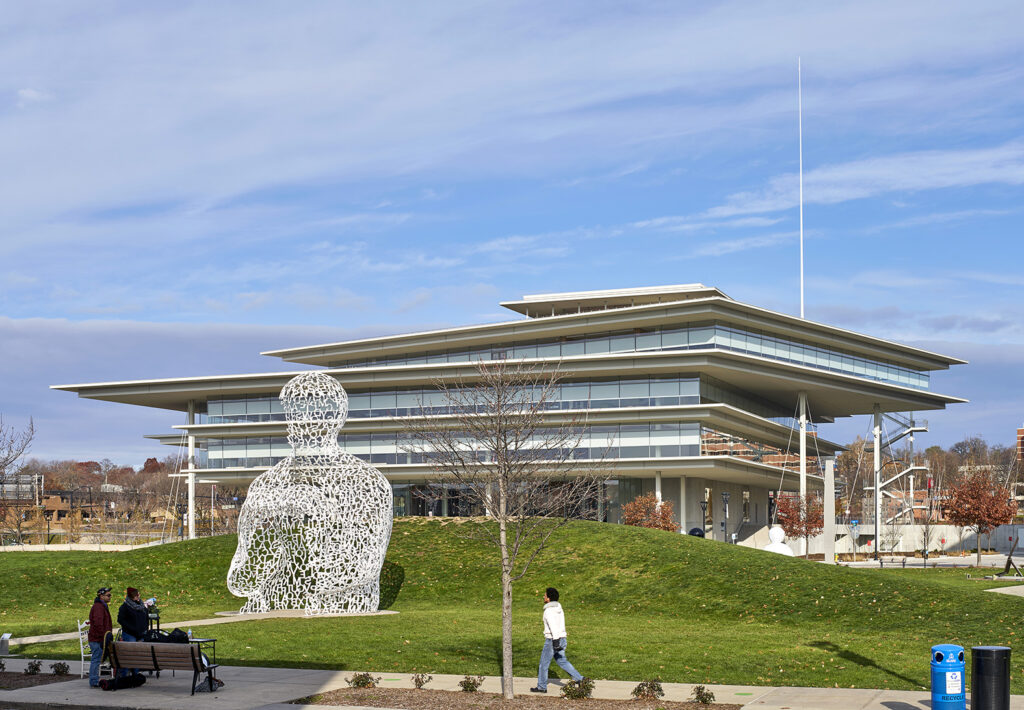Interstate designation for Highways 65/5 passes legislative hurdle

Gigi Wood May 16, 2025 | 1:22 pm
5 min read time
1,118 wordsAll Latest News, Government Policy and Law, TransportationThe Iowa House and Senate this week passed a bill that paves the way for a portion of U.S. Highway 65 and Iowa Highway 5 to be designated as a federal interstate, sending the bill to Gov. Kim Reynolds. The designation would help attract new businesses to the area, as many site selectors require nearby interstate before considering a location, advocates say.
Formal interstate designation requires not only the signature of the governor, but changes to federal rules, which could take several more years.
Economic development impacts
Central Iowa business, city and county leaders have worked for decades on designating highways 65 and 5 as an interstate. The Iowa House passed House File 1025 on April 22 and the Iowa Senate passed it on May 12. The bill removes the minimum speed requirement from the road corridor and directs the Iowa Department of Transportation and the Des Moines Area Metropolitan Planning Organization to conduct an analysis of alternative routes for farm traffic.

Communities along highways 65 and 5 in Central Iowa, including Bondurant, Pleasant Hill and Carlisle, realized they were missing out on business opportunities because the roads are deemed highways and not interstates, said Ryan Moon, director of government relations and public policy at the Greater Des Moines Partnership.
“Even though Highway 65, Highway 5, they look like interstates, operate very similar to interstates, it’s still not technically an interstate, so they’ve been missing out on both projects and opportunities,” Moon said.
Dylan Mullenix, executive director of the Des Moines Area MPO, said the designation change from highway to interstate will improve business opportunities in the area.
“Interstate designation will spur economic development along the 28-mile corridor. Ultimately, for the community, that will translate to more jobs and a broader tax base to support public services,” Mullenix said in an email.
The designation change will also provide an opportunity to clear up confusion on the roadways, he said.
“The Highway 5/U.S. Highway 65 corridor is notoriously confusing for drivers, which has been a problem for the airport for years,” Mullenix said. “You can be driving ‘south on 5’ and ‘north on 65’ at the same time, according to the roadway signage, so it’s easy to get turned around. Once it is an interstate, the signage should be much clearer for travelers.”
Carlisle Mayor Drew Merrifield said there are 300 acres in town next to the highway corridor that are ready for development. If a buyer was interested, that land could be ready to go and become a credentialed Iowa Certified Site “rather quick.”
“We’ve got some of the infrastructure there so it wouldn’t take a whole bunch to finish that out,” Merrifield said.
Carlisle has missed business opportunities in the past because of the highway designation, he added.
“We were told that we lost out on a couple international companies that looked at that land and it could have fit the bill, but it wasn’t that interstate designation that they wanted, so we lost out,” he said.
New business opportunities are important to the future of the city of 4,300 people, he said.
“One obvious benefit would be the additional tax revenue,” Merrifield said. “Also, we’re at that size now where we want to be bigger and have some of the financial obligations of a big city, but we just don’t have the commercial base yet to finance everything we need to.”
With the legislation passed in 2023 limiting city and county levy rates, new sources of revenue are essential, he said.
“It’s getting tough with what the Legislature did and how it’s handcuffed us in our abilities to meet [our obligations],” Merrifield said.
Cost of living adjustments to city staff employee salaries has increased other costs, such as the cost of unemployment insurance, he added.
“That raises the amount of insurance we pay because now we’re paying more salary so unemployment [taxes], all that stuff, goes up exponentially, along with the wages and we’re capped at 2%” he said.
Farm traffic
The highways are also used by the agricultural sector to transport goods across the Des Moines River, and those trucks often travel at slower speeds. A speed bump in advancing the interstate designation has been met with opposition from agricultural groups who need to transport at slow speeds.
“One of the challenges in achieving interstate designation for this corridor is there are legacy industries in Iowa that rely on the corridor for their operations,” Mullenix said. “Farmers need the bridge to transfer implements over the river between different fields. And the soybean industry needs the corridor to haul soybeans to the ADM facility for processing. With this legislation, the region has taken an important first step in achieving interstate designation while preserving the use of the corridor by these important industries.”
The minimum speed on Iowa highways is 40 miles per hour, while the minimum speed on interstates is 45 miles per hour.
“If you designate it as an interstate, essentially, that slower farm traffic will be forced off the [highway] corridor,” Moon said. “We do not want that. Over many years, we’ve searched for a solution.”
HF1025 removes the minimum speed requirement on the Highway 65/5 corridor to allow for farm traffic.
“We want to ensure that farm equipment can still be utilized on the corridor and in the future can have an alternative route that they can safely utilize,” Moon said.
Alternate road analysis
The bill directs the Iowa DOT and the Des Moines Area MPO to conduct an analysis to figure out what could be an alternative route for those farmers to utilize. Once the analysis is complete and an alternative route is designated, the speed and weight exemptions would be removed from the Highway 65/5 corridor.
Federal approval
During the Partnership’s recent DMDC trip to Washington, D.C., business leaders worked with the Iowa DOT on language to be added to a reauthorization bill next year that would allow for a vehicle weight exemption for the corridor, Moon said. On Iowa highways, ag equipment can weigh up to 96,000 pounds; on federal interstates, the weight limit is 80,000 pounds. Business leaders are working with federal lawmakers to lift that requirement on the corridor until an alternative route can be identified for ag trucks and equipment.
The long road
It may be a few more years before federal approval is secured for the project.
Moon said that the history of this bill gives a good reminder that policy takes time. Throughout the years, many of the same people have continued to advocate for this change, and much of the language has remained the same.
“It could be the same conversations each year; it’s building relationships, maintaining those relationships and taking on creative solutions,” Moon said.

Gigi Wood
Gigi Wood is a senior staff writer at Business Record. She covers economic development, government policy and law, agriculture, energy, and manufacturing.










